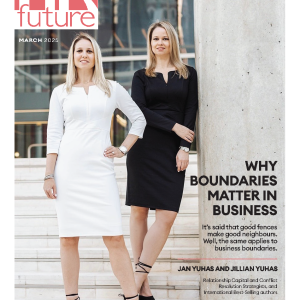The workplace is one of the most important social resources in a typical adult’s life but more meetings, faceless chats and fewer work friends is fuelling an epidemic of loneliness.
Right now, people are experiencing a surge in loneliness so profound that the American Surgeon General has characterised it as an epidemic.
Some believe remote and flexible work is at fault, fraying our social ties by removing incidental interactions from our daily lives but the data tells a different story.
Social connection, in general, has been declining for more than a decade.
Since 2003, the time we spend weekly with friends is down 20 hours per month, while time spent socially isolated has spiked by 24 hours per month. These patterns hold in the workplace, with research from BetterUp, an American company that helps employees develop their careers, finding that only 68% of workers in 2024 say they know their colleagues personally, down from 79% in 2019.
The decline in workplace friendships has a deep impact on us. More than 50% of people make a close friend at work and we are more likely to make friends at work as an adult than through friends, schools and our neighbourhoods.
Since 2007, Gallup’s quarterly employee engagement survey has measured the strength of workplace friendships. According to this data, the low point for office friendship — the year that the fewest Americans reported having a best friend at work — was 2013.
That report notes that returning to the office will unlikely solve the problem.
Remote workers often prefer to work from home for specific reasons. Forcing them back to the office sends their engagement plummeting, which drives up loneliness and all the associated health and productivity implications.
What are the workplace factors that drive loneliness?
The key factors driving loneliness at work are not location but gender, seniority, and time spent in meetings. Men were far more lonely than women, and senior leaders were far more lonely than other workers. Counterintuitively, people who spent the most time in meetings were more than twice as likely to say they were very lonely than those with fewer meetings.
Strategies to foster connection
- Create space for non-work topics: the top predictors of connection between colleagues focus on getting to know people personally through casual, fun conversation. Conversations about work are not strongly associated with better relationships. Create opportunities for chit-chat within the flow of existing work conversations — people don’t tend to attend optional workplace social time — and make sure leaders participate too.
- In-person time, but not all the time: just one high-quality in-person interaction with coworkers boosts productivity and engagement that lasts for 3-4 months. Similarly, you need just one in-office interaction per month to provide 90% of the social benefits of in-person work.
- Eliminate the junk meetings: Meetings without purpose or agenda are hurting teams. A handy tip for eliminating low-impact meetings and boosting the outcomes of the remaining ones. When you do meet, be sure to carve out time for socialising.
- Focus on trust and psychological safety: Small talk boosts weak ties, which are important at work, but vulnerability is the key to true connection and friendship. Workplaces that create a culture of trust and psychological safety not only enjoy better business outcomes but also create more fertile ground for strong social networks to flourish.
Building a happier and more connected workforce
Worker loneliness is not a simple problem.
The good news is that the workplace is predisposed to alleviate worker loneliness. People may be lonely at work, but they’re significantly lonelier without it.
Linda Trim is the Director at Giant Leap.


























